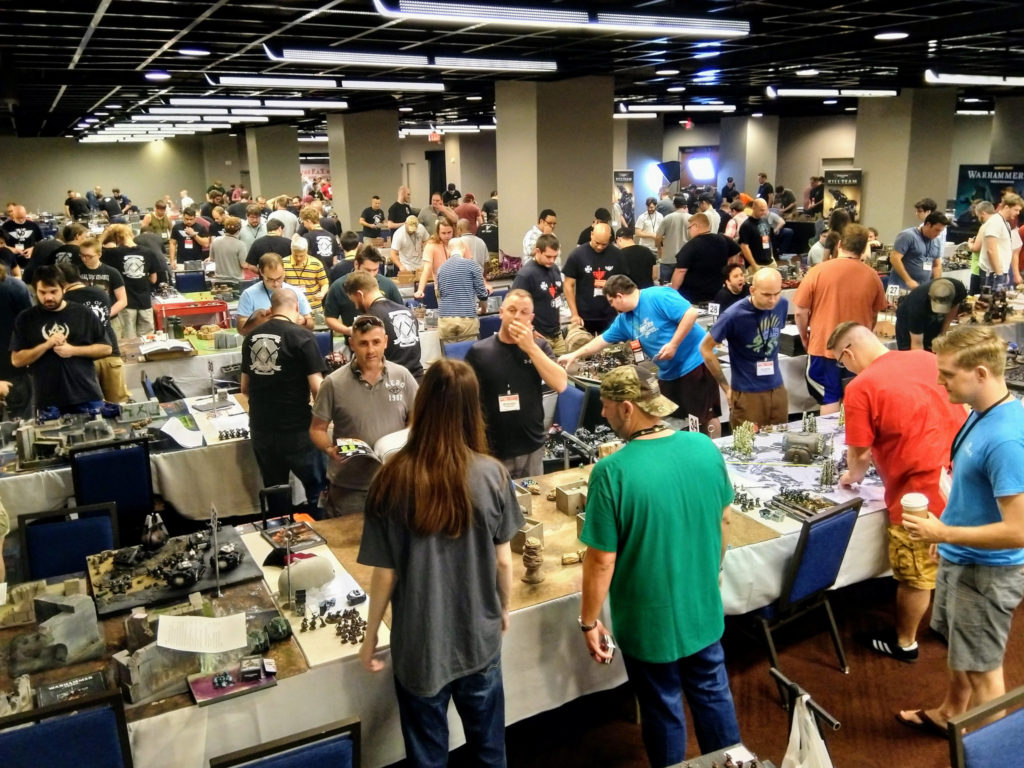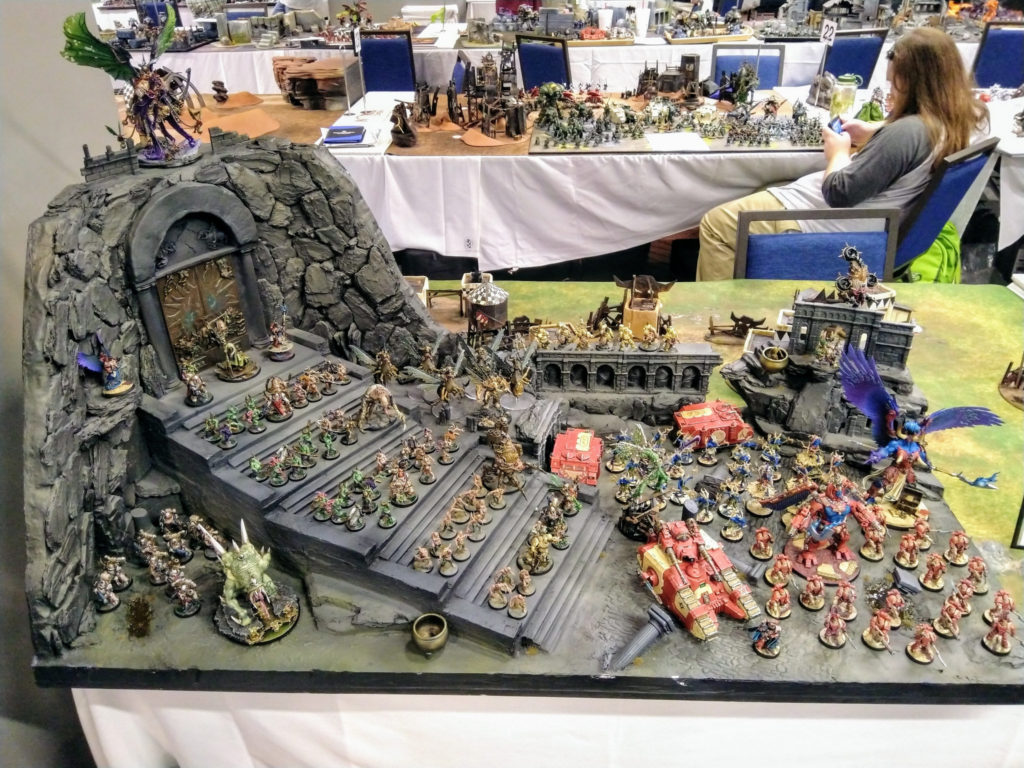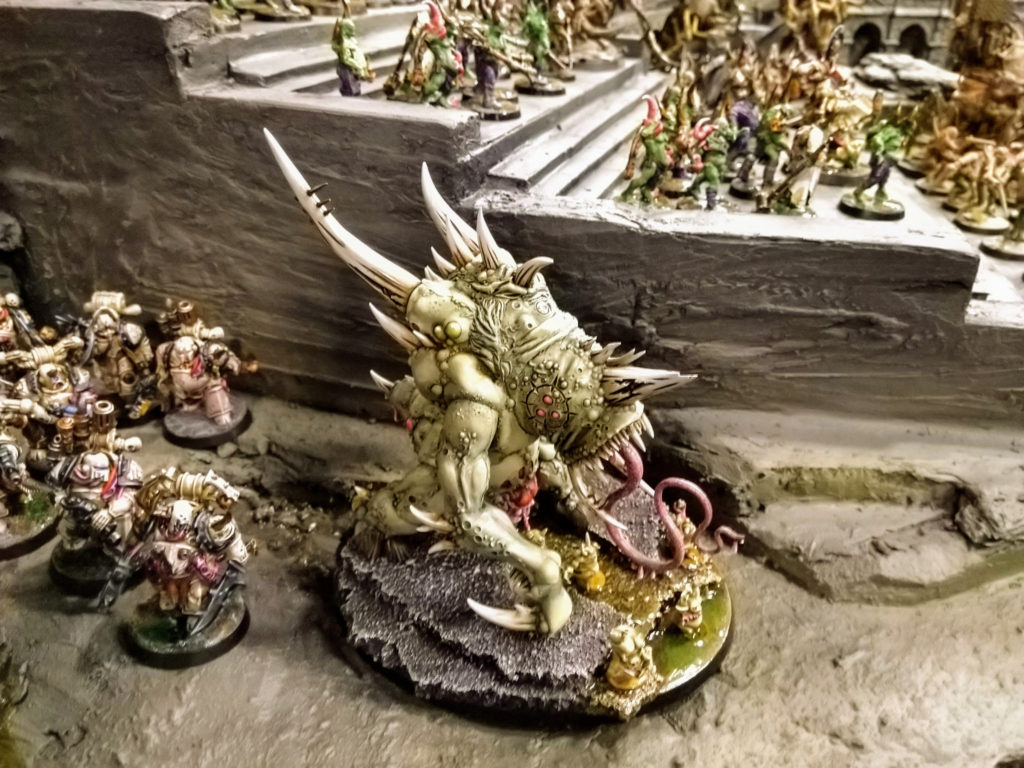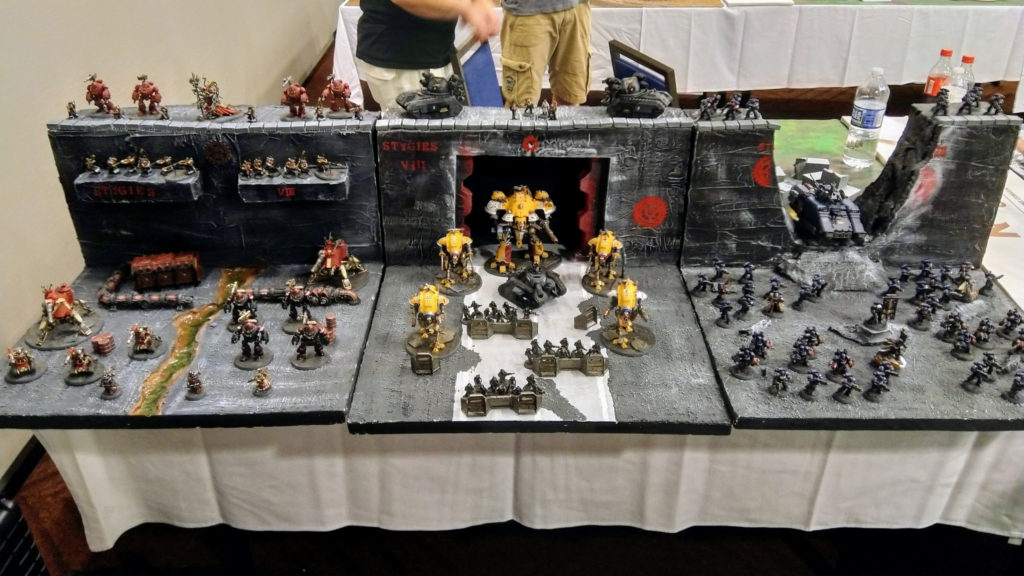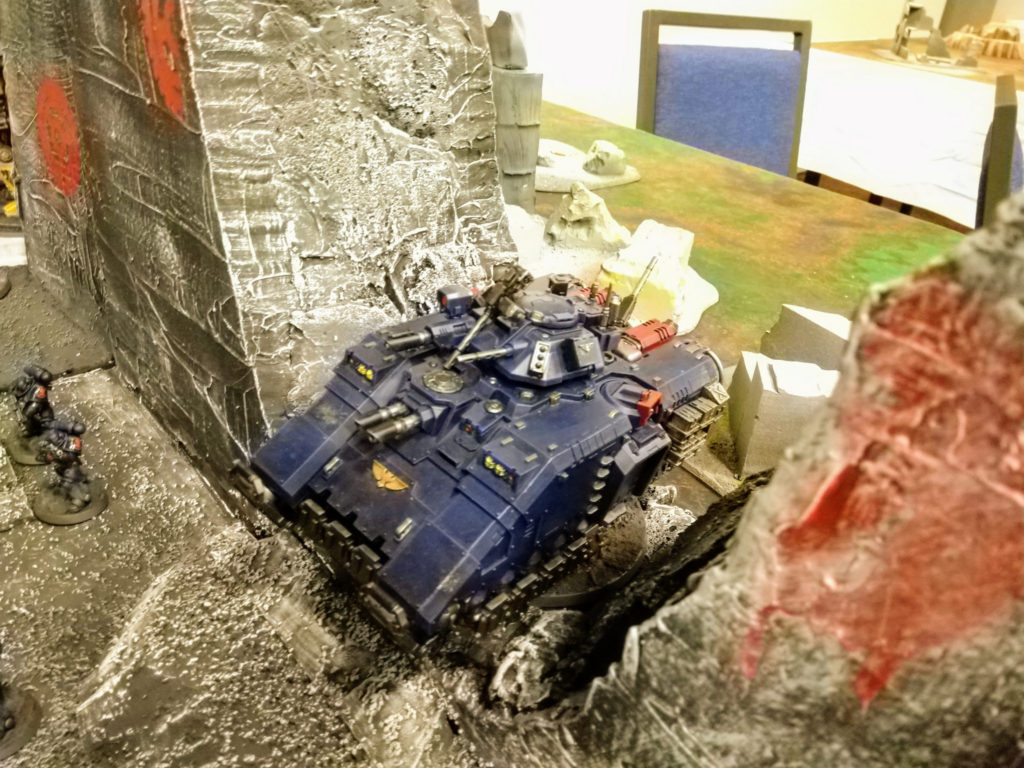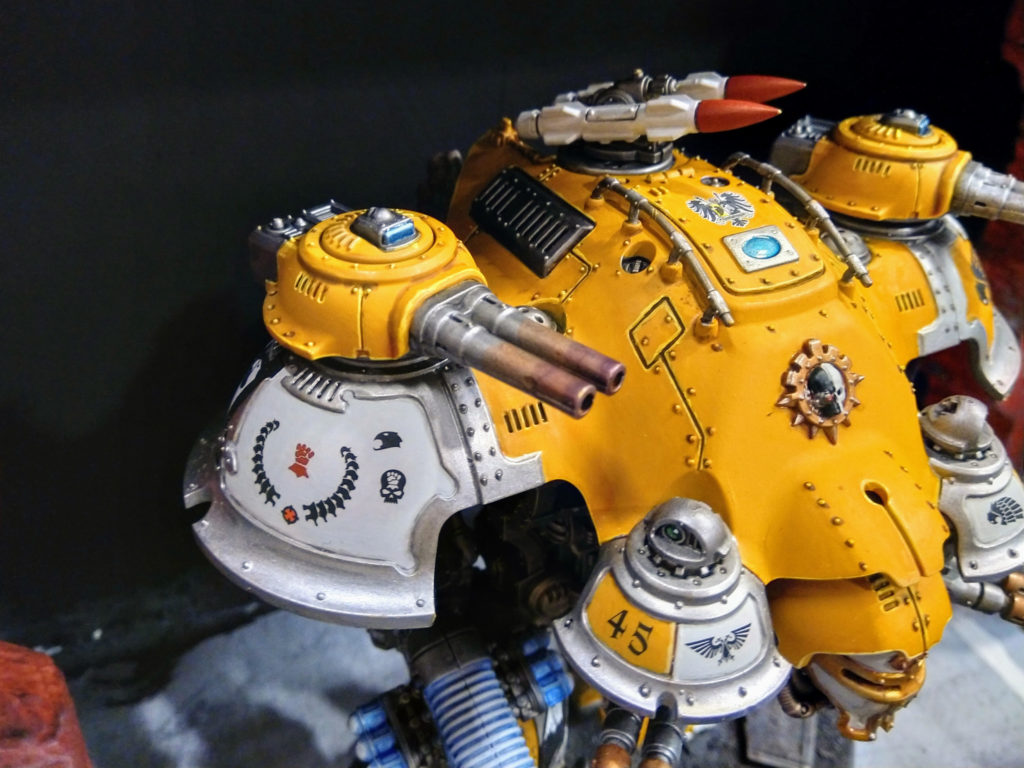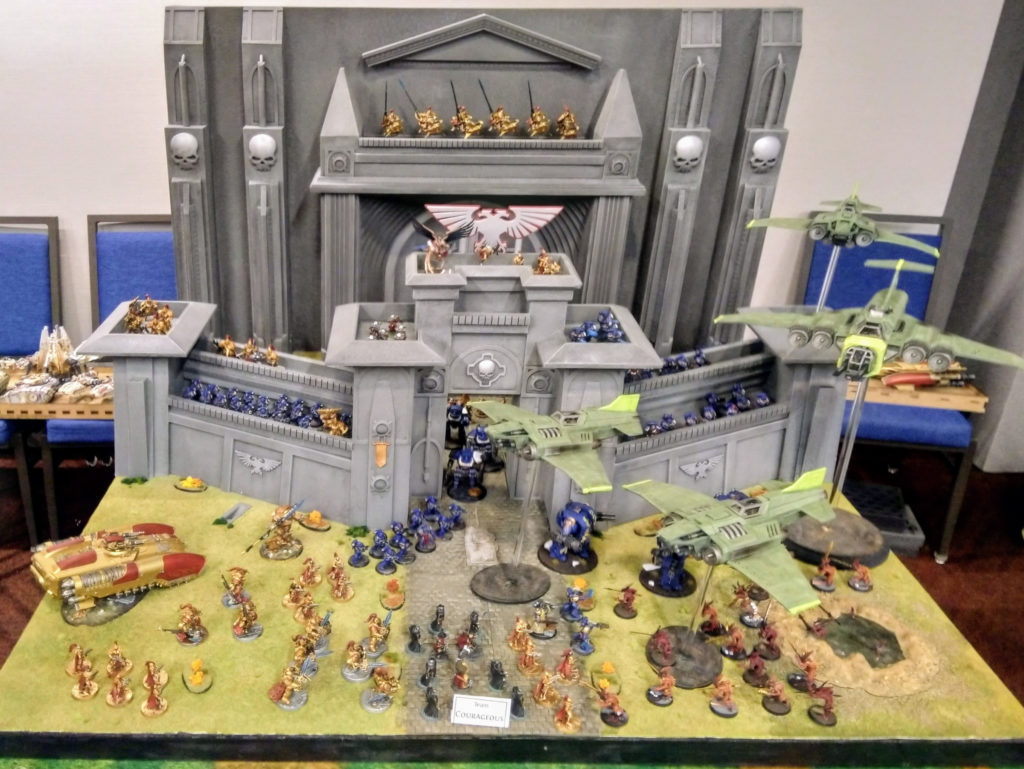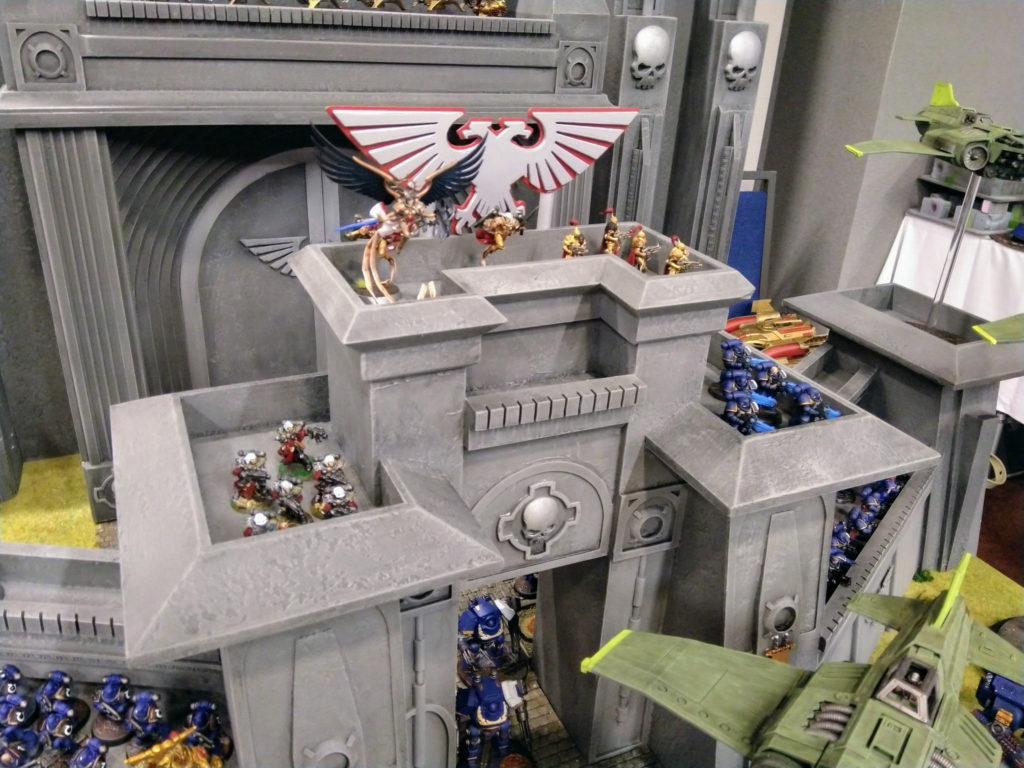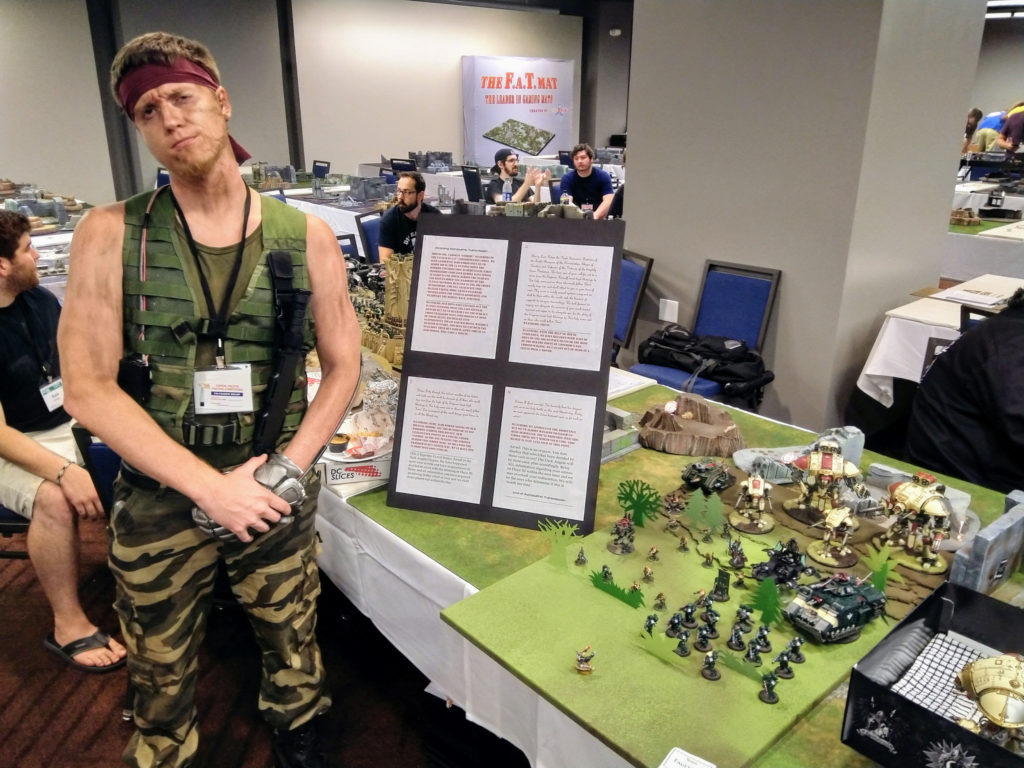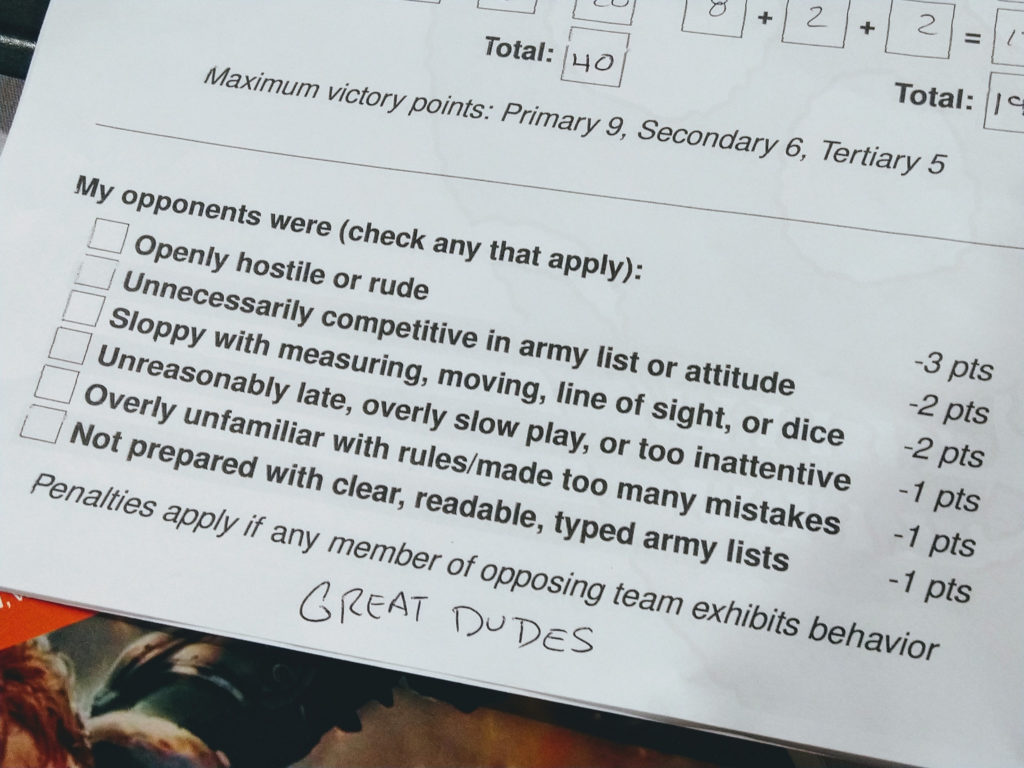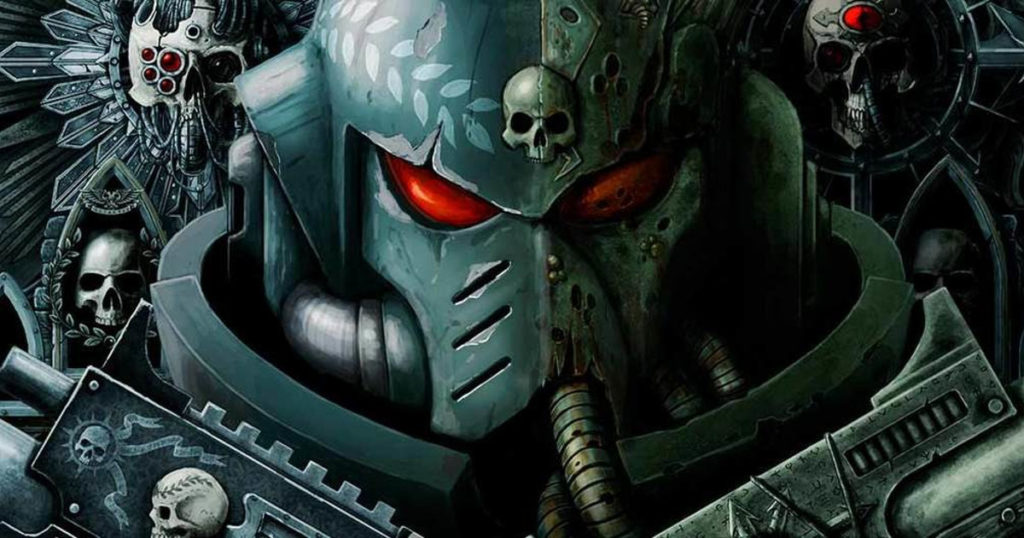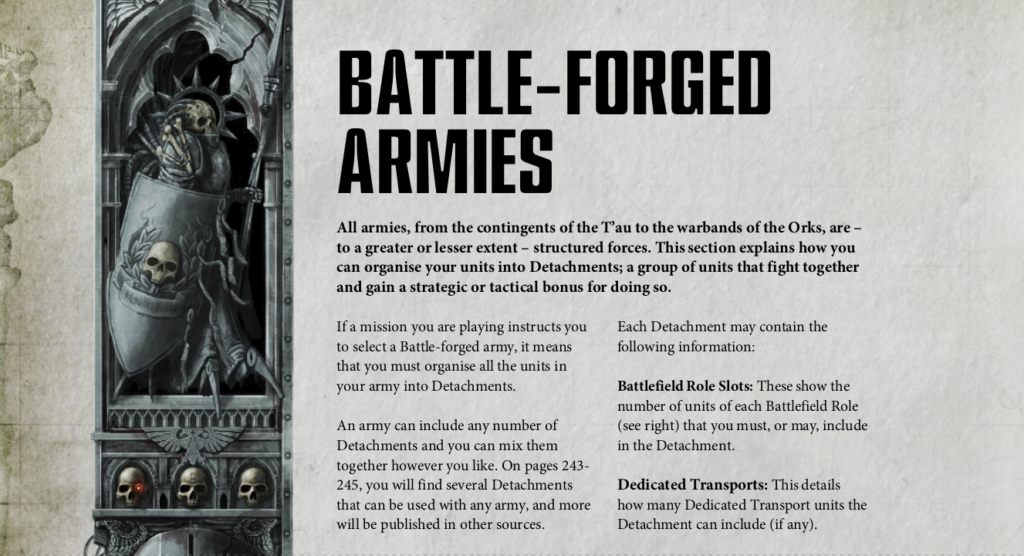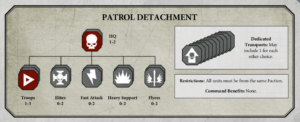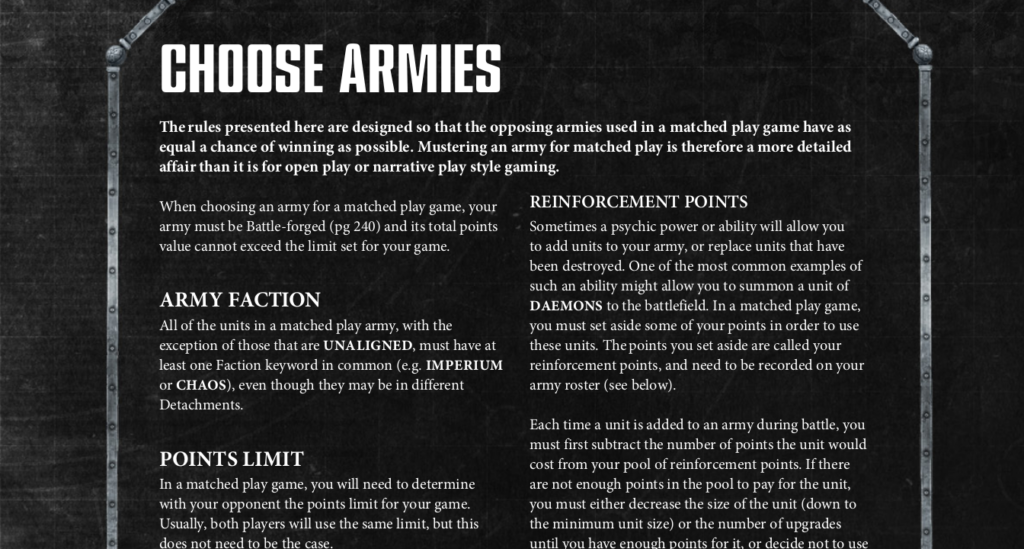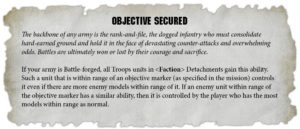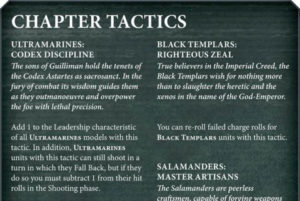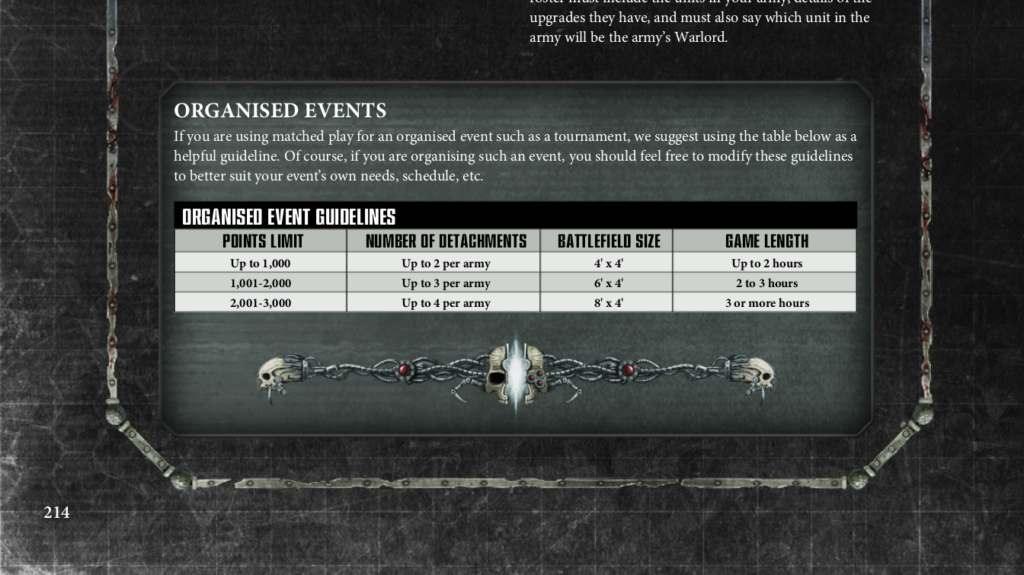
Yesterday I was able to hit up the monthly Infinity tournament at Redcap’s for the first time in a while. Our group is in a rebuilding phase following a lot of growth in 2017 and a dip in 2018, so I was happy to see a showing of 8 players that was simultaneously small but solid (below our late 2017 average, bit higher than 2018). Don handled scoring & pairing and it was a low key, fun day.
For me it was another datapoint toward my half-serious suspicion that I have a narrow band in which I play Infinity best, because… I won! That band is basically “Have played enough recently to remember core rules and dynamics, but am not playing enough to try to get tricksy.” Some of our group’s heaviest hitters weren’t in attendance, but I directly faced two of our top tier players and was happy with my play. This batrep has some quick notes on what I was thinking.
Shock Army
![]() Coming back after a bit of a hiatus, I decided to build and field a squad from the Shock Army of Acontecimento. I’ve played RECON+ firefights with the faction but had never previously prepared enough troops for full games. I really really like a lot of the models though, so I just committed to using this event as a forcing function to get together a 300pt army. Entertainingly, literally as I was sitting down to paint a bunch of the models, Adam H sends Don & I a message “Did you see that Shock Army got discontinued?” and I was like “¡¿WUT?!” (Corvus Belli is rotating a number of the models out of production, but the faction will remain playable)
Coming back after a bit of a hiatus, I decided to build and field a squad from the Shock Army of Acontecimento. I’ve played RECON+ firefights with the faction but had never previously prepared enough troops for full games. I really really like a lot of the models though, so I just committed to using this event as a forcing function to get together a 300pt army. Entertainingly, literally as I was sitting down to paint a bunch of the models, Adam H sends Don & I a message “Did you see that Shock Army got discontinued?” and I was like “¡¿WUT?!” (Corvus Belli is rotating a number of the models out of production, but the faction will remain playable)
I then decided to orient my army around Bagh Maris, mostly because I love the most recent sculpts. It also didn’t hurt, though not a huge consideration either, that the Season 10 ITS rules gave the unit Forward Deployment. I’d had a box sitting on my shelf for ~18 months now, and I had picked up the HMG blister at an event two weeks ago just to support that shop (Maplewood Hobbies). So I guess on average the turnaround time from box-to-table for these models was… almost reasonable??
Looking at the recent faction updates I also decided to add Dart just because the profile grabbed me and I had a cool model for it. I’ve never played with Camo except for mostly trivial uses of TO Camo (pop out from hiding and tap an objective or surprise shot something) and she seemed like fun. Last week I’d noticed the new CSU blister at Redcap’s, had randomly picked it up just because it looked cool, and it clicked that it could be a passable Dart proxy: S2 profile, Uzi-style pistol for a Submachine Gun, funky shotgun-thing to stand in as a Viral Tactical Bow. Personally I really like the image of this Corporate Security character playing with Dart’s very mobile abilities—she’s so skilled, so tough, so cool under fire, that she’s out there sneaking around (Camo), climbing walls (Climbing+), and tanking hits (No Wound Incapacitation), all in her business suit. It’s the James Bond firefight aesthetic, which I really enjoy.
So I got to work. Wednesday evening I assembled the models, Thursday I got in a practice game to have played the units at least once, overnight Saturday I painted them, Sunday they were the core of winning three games—I actually couldn’t even put them in my cases to drive down to the shop because the final washes were still drying.
Missions
The three missions for the event were Acquisition, Supremacy, and Unmasking. I’m not a big fan of ITS missions generally (many are a bit overly complicated, the Classified Deck has issues with balance and negative play, and the writeups are unnecessarily confusing and poorly presented). These were enjoyable though. For my intended primary units they worked well in that they each require some specialists to work objectives and there’s a lot of mid-field play. Bagh Maris, for example, are suited to those because they have Paramedic and Hacker specialists, a good selection of ranged and close quarters weapons, and at least in this season have Forward Deployment.
Importantly in hindsight, the morning of the event I sat down and wrote a quick summary of the missions. My primary motivation was to share with the group and help keep things moving and people informed. But that also meant I’d closely read all of the scoring conditions and had better familiarity with the missions than I usually have.
Lists
In thinking about army lists I applied a standard top level rubric of mine:
- Keep it simple—one or two tricks;
- Need some redundancy but can’t spend on too many heavy hitters;
- Pick cool models.
I also constrained myself to only painted models, with the Bagh Maris and Dart being all the new models I could stretch to realistically get done before the event. Those added to the Akal Commandos, Regulars (and Fusiliers if needed), Montesa Knight, and variety of Pan-O bots that I had on hand ready-to-go.
In the end I chose two lists:
- Bagh Mari Runaround for Acquisition and Unmasking;
- Akal Commando Drop for Supremacy.
As with the overall army direction, some of these selections are just about cool models. Why a Regular Sapper Sniper over a Bagh Mari Sniper? On our group’s tables Sapper on the Regular is a wash with Mimetism on the Bagh Mari, the latter can likely deploy in cover. The Regular is 6pts cheaper, but not as well equipped (weaker armor, no MSV1, mines, etc.). Ultimately I just wanted to play the Sapper. They’re both really cool models, but the former I’ve had painted for a while but never used because it doesn’t make sense on the small tables of RECON+, so she got her chance.
But, I did put some thought into these selections.
Bagh Mari Runaround
The core idea in the Bagh Mari Runaround list is a big ‘ole 5-man fireteam with a bunch of tools to roll forward onto objectives while Dart and the Naga provide mid-field surprises and the Sierra & Sapper long range reactive coverage from my backfield.
The “one or two tricks” is the 5-man team along with Dart & the Naga. I have very very rarely played a full fireteam like that, so managing it and using it effectively was going to be a challenge. Camo games are also not something I have much experience with so I was worried about using the latter two well. The Naga was a late addition that I’d also never used before but happened to have a painted one from a trade some time ago. I figured it might synergize well with Dart, and at minimum could play a lot like my beloved TO Camo Order Sergeants in my Military Orders lists: A specialist that can be deployed close to the objectives and not have to spend orders running upfield. Between the big team and the Camo, that was about all the complication I wanted.
For heavy hitting I thought a lot about including a Montesa Knight in this list. I absolutely love the starter box model and it’s been the core of my RECON+ Shock Army lists (deploying forward with a Spitfire, a Lieutenant order, and good armor can be very strong on those tables). But I couldn’t justify it here because of the investment in the Bagh Mari fireteam. That was going to be my primary driver, consume most of my orders, and need as many of those as I could get. I would also already have two HMGs on the table, plus a Sniper. So, following my second guide of not having too many heavy hitters, the Montesa Knight sat out. I was also thinking the Montesa Knight would be too far backfield to step in if the team got wiped, but on second thought with its Mechanized Deployment that’s not true so I’ll think about it again in the future.
Akal Commando Drop
The core idea and “one or two tricks” in the Akal Commando Drop list is having a bunch of Akalis to drop into the enemy sectors for domination points, while the Haris option on the Bagh Maris lets me have two fireteams to efficiently advance onto objectives.
Notably, the Akalis are all organized into one combat group so I can put coordinated orders on them right away. The cute idea here is ideally I’d bring all four onto the board, take just a couple actions, and then use coordinated orders to move them all into safe positions and Suppressive Fire to rack up points in the domination sectors. This is really risky, effectively starting very low on orders with at best just six on the table in the primary combat group at game start. But I play a lot of AD-heavy lists and single combat groups all the time with my Military Orders, so I felt comfortable with it.
Fight!
My two lists and (very) freshly painted models in hand, I headed into the tournament.
Round 1: Acquisition
First up I faced Wayne and his Nomads, trying to hack Antennas and be in base-to-base with a Tech-Coffin on the centerline in Acquisition.
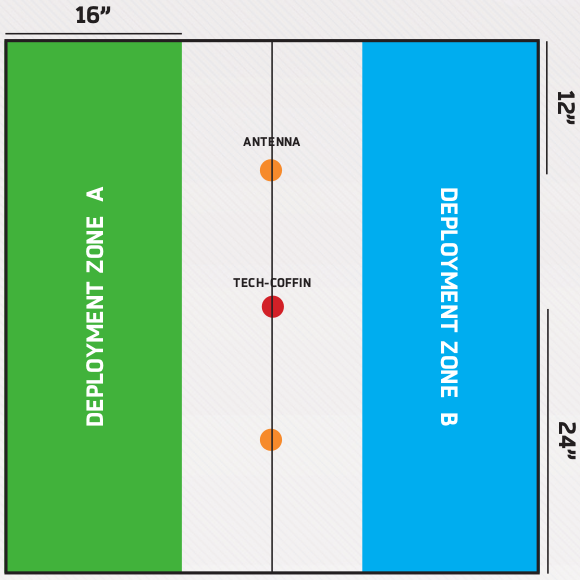
Acquisition table configuration.
Wayne brought a very small list focused around a Gecko and a fireteam with multiple HMGs. He went first and made a solid firebase with the Gecko in a central position overlooking the Tech-Coffin while the HMGs provided overwatch. I lost my Sierra TR turret and Regular Sniper very early in a string of unlucky rolls. The Bagh Mari team got into a good position covering an Antenna and the Tech-Coffin, and the HMG had a sustained fight with the opposing team. Eventually though something was able to sneak around the building they’d camped out on and take him down with a Chain Rifle. I also played my Commandos poorly, a little too aggressively and a lot too carelessly. I didn’t check line of sight well enough and one got pipped right away on landing. The other held on, took out a model, and absorbed some orders, but wasn’t well spent. Dart spent a lot of orders on a very lucky specialist on the other Antenna, but eventually was able to clear the latter and then break the HMG team.
Outcome: Major victory.
The big success here was to not stress about losing my heavy shooters early. I took a moment to settle, then focused on line of sight and Careful Moves around terrain and onto the objectives without the benefit of big covering fire. Importantly, I didn’t try to press an attack or maximize my quantity of AROs. I mostly held to my table half, kept my models alive, and did just enough to continually trim down Wayne’s orders and keep his advancing units off the objectives but not actively go forward to further engage his army or lean my guys out to get whittled down.
Round 2: Supremacy
Next up was Tom and his Nomads, trying to hack Consoles and dominate (have more army points in) quadrant sectors in Supremacy. I think of Tom as my benchmark player: We’ve been closely matched for a little while now, but he has much deeper experience with the game. So if I play very well I might beat him, but it’s always a real tough battle and we’ve been going back and forth 50/50 on wins, which is great.
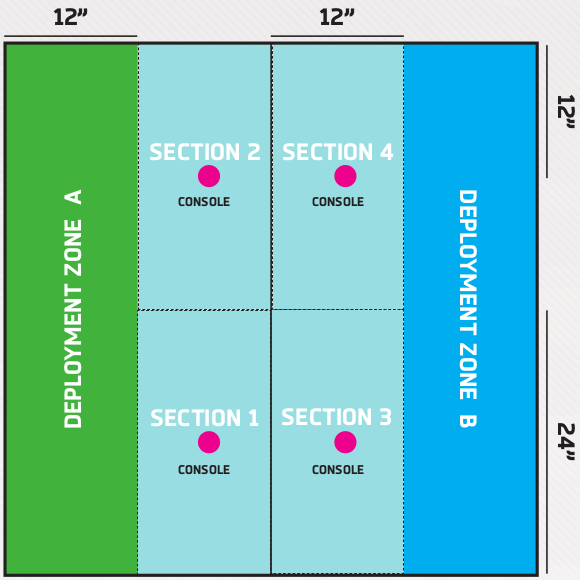
Supremacy table configuration.
At the start of this battle I realized “Oh snap, I did not practice this at all and have not thought this through!” My list had no good model with which to sync the mission’s Xenotech (i.e., without breaking a fireteam). Ironically I had made comments about that problem for my typical Military Orders lists when Season 10 came out, but just didn’t think about this mission too much coming in. Sooo my Xenotech wound up synced to my Sniper in their Foxhole, which audibly confused Tom when I declared it. I carefully maintained a stoic visage of grand strategery…
On the one hand I made some dumb moves throughout this game. The Bagh Maris could have trivially deployed much closer to an objective and saved an order. I spent the last order in my primary combat group Turn 1 to put my Akalis into Suppressive Fire, kept one out because I didn’t want to activate it in sight of a TR bot, only to then realize my Sniper actually had a shot on that bot and took it down, so by not staging orders properly I had blown what could have been a very strong position for that Commando. Very late in the game I could have positioned Dart better to cover the approach to an objective. Lots of little but important missteps like these.
On the other hand, that I was picking up on those inefficiencies was a good sign that I was generally on my game. As planned, early on the Akalis took the battle forward and acted as speed bumps, so we were fighting over Tom’s sectors rather than mine. That created space for my fireteams to run up into my quadrants and claim the Console objectives. Dart shored up the center, and the fireteam of Regulars came forward on the side and denied Tom’s last minute attempts to claim a second objective.
The Xenotech syncing turned out… weird. It actually wasn’t terrible to be synced to the Sniper—the Sniper did its thing, then moved forward enough to get the Xenotech just short of placing the Multiscanner but inside a quadrant. The Sniper died but an Akal re-synced the Xenotech, only for the latter to fail dropping the Multiscanner and the Commando to get shot down. Upshot was for three turns I had the Xenotech in a dominated quadrant but not synced and the rules-as-written seem to clash with plausible intent as to whether or not that met one of the scoring conditions. After a good amount of discussion and searching books & Google among Don, Tom, and I—the rules debate we prompted is still going in the WGC Infinity Facebook group—we went with the former. That put the game in my favor, from a 1 point loss to a 2 point victory.
Outcome: Minor victory.
I had two big successes here. One was taking the fight up into Tom’s sectors and putting him squarely on the defensive. The other was that I had strength in depth on the center and a supporting flank. So, for example, a Taskmaster started coming forward but got held in check by a series of speed bumps—two Akalis, another Akalis Hacker, Dart, a Spitfire Regular—and eventually put down, yielding its sector.
Round 3: Unmasking
Last up was Don and his new OSS trying to hack Consoles while identifying and eliminating a Designated Target hidden among several decoy civilians in Unmasking. Don and I have been playing games for 15 years now, ever since he was the first one to stand up and say hi when my friend Daryl & I walked into our first PAGE meeting. So I was really happy when he started playing Infinity… and then dismayed when he started practicing a lot and got good at it! (kidding) (about getting good at it! oh, snap!)

Table configuration for Unmasking.
The terrain and limited independent units in my army composition kind of forced my deployment to be concentrated to one side, leaving the left-most civilian looking entirely unprotected. Don teased me about it, that I better not be taking a wild flyer making that the Designated Target hoping he would assume it couldn’t possibly be. I thought about it! But I also knew that I had Commandos waiting to drop in on that side if necessary. However, I went for a conservative option and chose my centrally placed civilian. I figured Don would have to hedge his bets by moving toward my heavily defended civilian, but if my defenses failed I didn’t want my Designated Target to be at the point of that thrust. Those defenses were also mostly applicable to the center one.
A bigger risk was that the Bagh Mari team all camped out behind a barricade on the flank, absolutely ripe to be surprised by some kind of Airborne troop or a Smoke warband running up to template them. But there wasn’t much cover on the available buildings, I wanted to be upfield a bit, and from that position they’d have a good angle on one of the two main approaches, so I very hesitantly went for it.
That was ultimately a critical decision. Backed up by the 5-man team (so +3 BS, +1 B) and its MSV1, the Bagh Mari HMG eventually won a gunfight with an advancing team and took a ton of energy out of Don’s forward advance. The Naga worked terrain angles to run up to the center Console and find Don’s Designated Target, then settled into a good position to defend mine. Dart came up and Spiderwomanned into her own excellent defensive position on the other Console. Going into Turn 2 Don was in Loss of Lieutenant and my forces in really strong defensive positions covering all the major arteries. I didn’t lose much and then was able to swarm forward to take out his Designated Target and move the action decidedly onto his side of the table.
Outcome: Major victory.
A big success here was actually meta-game, the physiology of tournament play. The game with Tom was tough and I’d just barely held on mentally, let alone in the score. It was getting late in the day, hadn’t slept much, getting hungry, etc.. So at the top of this round I had to drink some water, spend a quiet moment refocusing, and explicitly think toward pushing on to win rather than relaxing and settling for second or third.
Game-wise, my big success here was deployment. We’d actually joked during it that “This is the whole game, right here, we’re just gonna set up models and then think about it, decide who would win.” That turned out true to a large extent. I had a good mental map on all the different angles across the board and all my units either in strong positions or able to get into them. Importantly, my first turn I didn’t worry about killing or even too much claiming objectives. I spent all my orders just getting troops ready to rebuff Don’s next turn and then go forward in mine, and it worked out.
Conclusion
With two major victories and a minor, I came out ahead on tournament points and objective points. Winning is obviously good, but I was happy just to play well. I hadn’t actually played Infinity between mid-April and mid-September, and it was nice to get back into the groove fairly quickly and do well against a couple tough opponents in good games with friends. Looking forward to playing more!
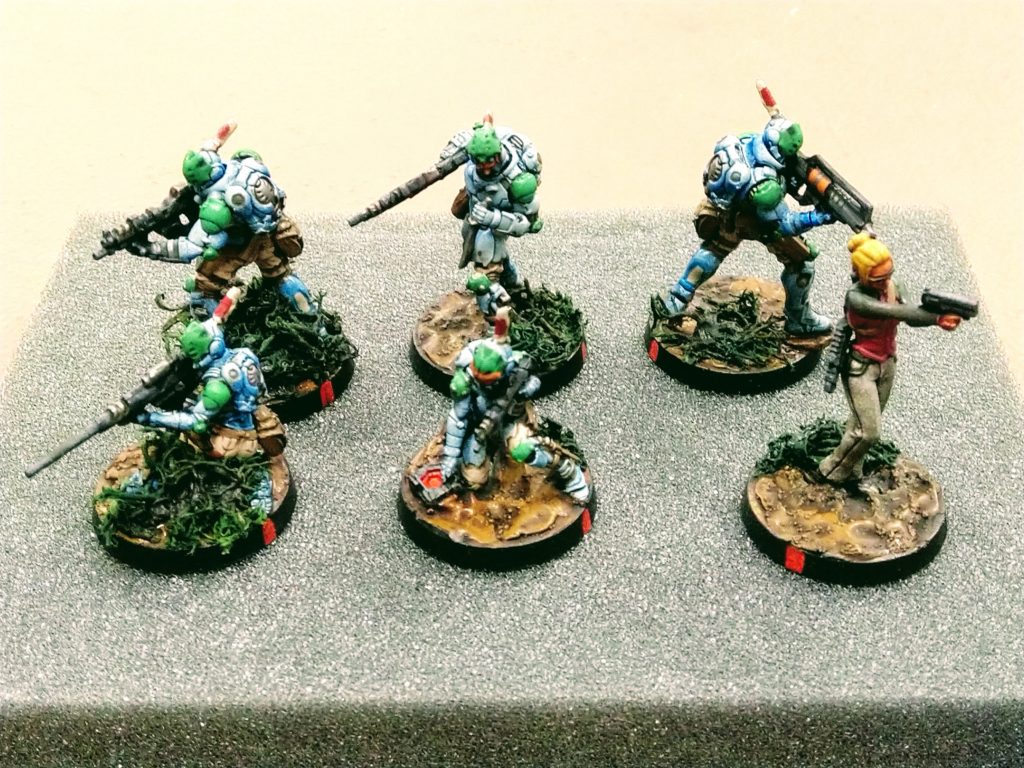
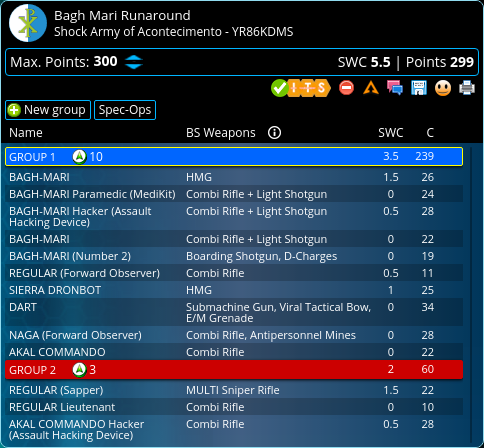
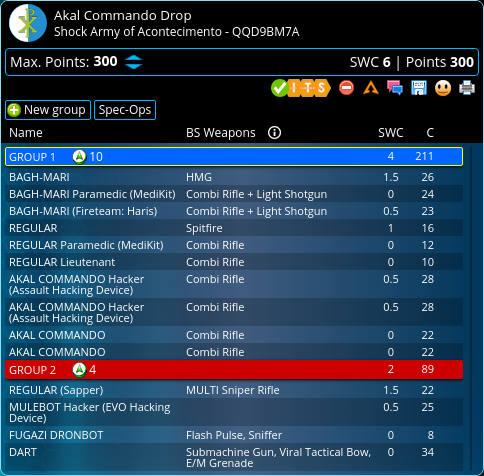
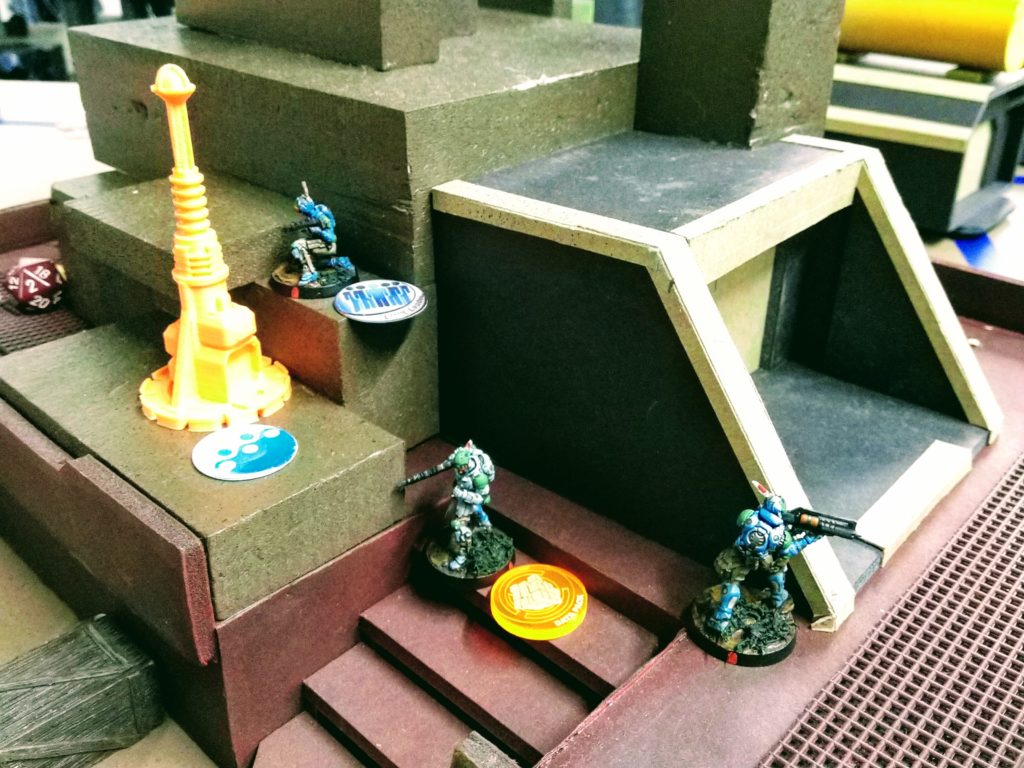
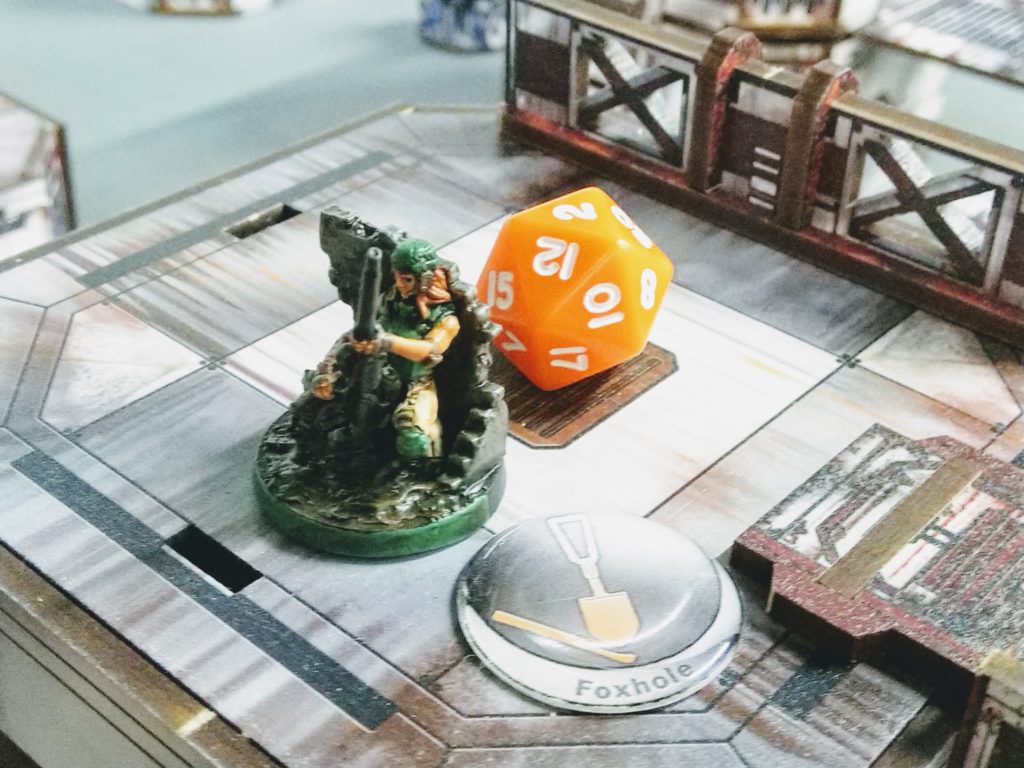

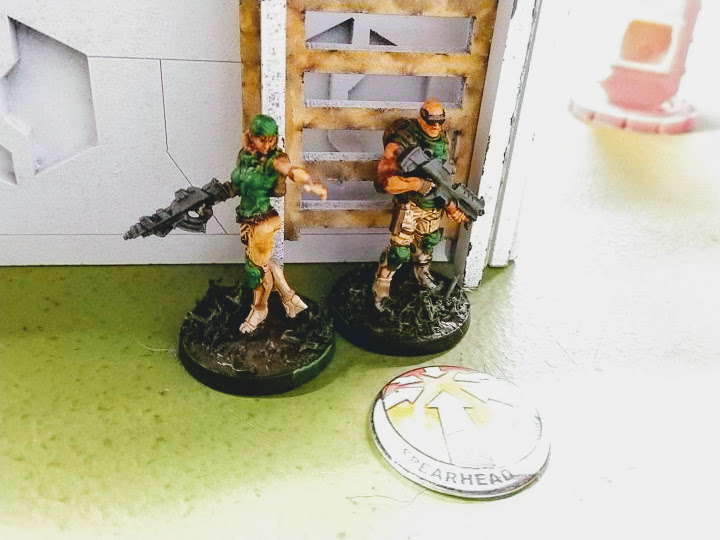
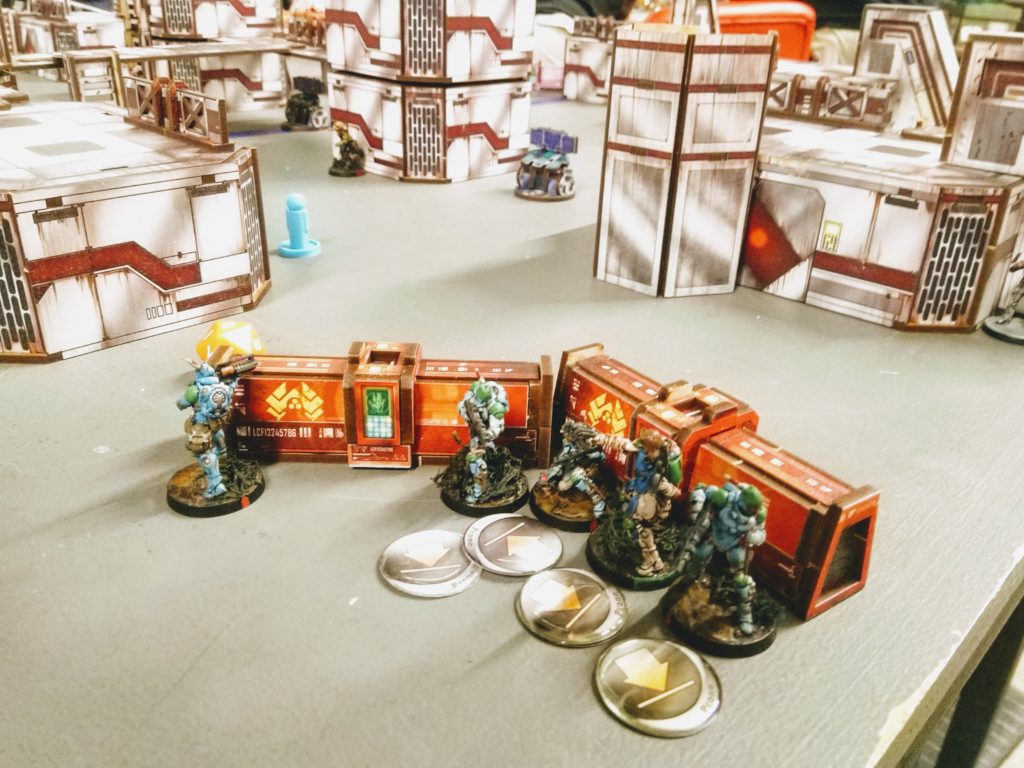
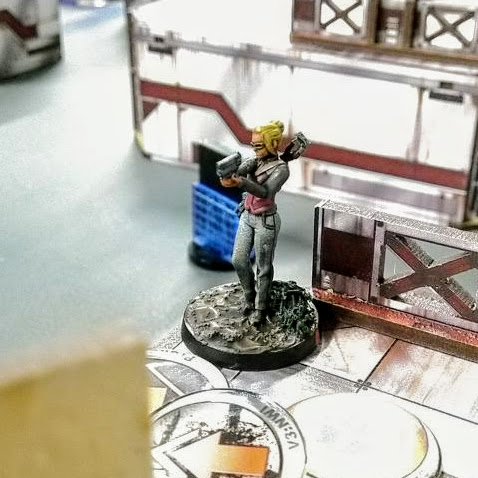
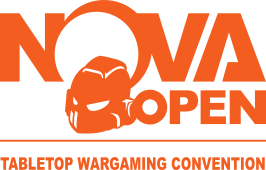 This past weekend Colin and I organized the Warhammer 40,000 Trios Team Tournament at the
This past weekend Colin and I organized the Warhammer 40,000 Trios Team Tournament at the 